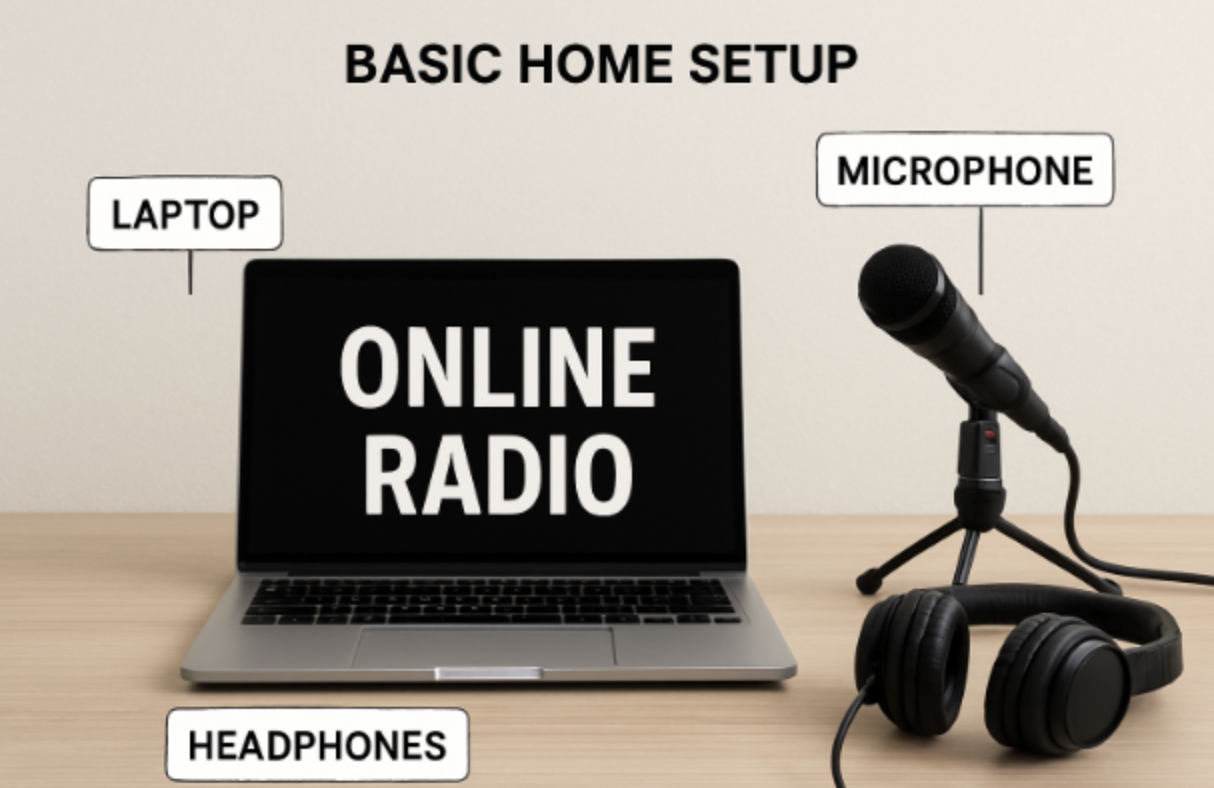How to Start an Online Radio Station: A Comprehensive Guide

Key Takeaways
- There are multiple types of online radio stations; select the format that aligns with your goals and creative vision to build a dedicated listener base.
- Planning engaging content and a consistent programming schedule fosters audience growth, making your station memorable and reliable to listeners.
- Professional-grade equipment and reliable broadcasting software are crucial for producing high-quality streams, ensuring a polished and enjoyable listening experience.
- Securing music streaming licenses ensures compliance with copyright laws and protects your station from legal complications.
- Effective promotion and ongoing improvement strategies are vital for long-term success in a competitive digital audio landscape.
Introduction
Launching an online radio station offers a unique opportunity to connect with a global audience and share your voice, music, or talk shows with listeners everywhere. The digital landscape has made it accessible for almost anyone to become a radio broadcaster, removing many of the geographical and technical barriers that limited traditional broadcasting. Whether you want to create playlists, host interviews, or lead discussions, the steps below help turn your vision into reality. Establishing an online radio presence gives you a platform to reach diverse audiences, fostering cultural exchange, creative expression, and community. As traditional broadcasting shifts, the chance to experiment and connect directly with listeners has grown. With streaming and podcasting’s rise, building your online station is easier than ever. Unlike traditional radio, online stations offer flexible formats, allowing engagement with global audiences, content management, and tailored broadcasts for specific interests. Modern tools and services simplify setup and operation, making it feasible and rewarding to focus on creativity without technical concerns. The internet removes traditional limitations, reaching vast audiences across continents and time zones.
Define Your Station’s Format and Content
Begin by clarifying the type of experience you want to offer. Are you creating a music station, hosting live talk shows, providing compelling news, or a blend of all three? Your format and genre choice should reflect your interests and expertise, while also considering the preferences of your target audience. For example, if you have a passion for jazz or indie rock, a music-heavy format may be most fulfilling. On the other hand, if you have strong communication skills or industry knowledge, talk shows or news segments might be more suitable. Specialized niche programming can attract dedicated listeners looking for content that’s not readily available on mainstream platforms, fostering a sense of belonging and loyalty among your audience. Identifying what makes your station unique will help you stand out from the competition and aid in developing a marketing strategy tailored to your strengths.
Plan Your Programming Schedule
Consistency is crucial when establishing your station. Design a regular schedule specifying when each type of programming will air. This could include morning music blocks, evening talk shows, or weekend live sets. A well-organized schedule offers structure for both you and your listeners, so they know when to tune in for their favorite segments. Integrate live programming alongside curated playlists, interviews, or thematic segments to keep things dynamic. Mixing live events with prerecorded content allows you to maintain a vibrant, fresh station even if you can’t always be on air live. Listeners are more likely to return if they know what to expect and can rely on your scheduled content, developing listening habits much like traditional radio audiences. Utilize tools like digital calendars, scheduling apps, or spreadsheet planners to streamline and visualize your radio timetable.
Acquire the Necessary Equipment and Software
Equipping your home or studio for online radio doesn’t require excessive spending, but investing in quality gear is vital for a professional sound. At minimum, you’ll need:
- A reliable computer with a steady internet connection, as uninterrupted streaming is essential for a smooth broadcast.
- Broadcasting software, such as Muvi Playout or similar alternatives, helps manage shows, playlists, and jingles, allowing for seamless transitions.
- Quality microphones and audio interfaces for crisp vocals and clear audio, ensuring that your station sounds professional and pleasant to listeners’ ears.
- Closed-back headphones for real-time audio monitoring, so you can catch technical issues as they happen and adjust accordingly.
Platforms like Muvi Playout simplify technical tasks, letting you launch and run your station with less hassle, freeing more time for content and audience engagement. Additional tools like soundproofing panels, pop filters, and basic acoustic treatments improve audio quality by reducing noise and echo. Explore tutorials and online communities where experienced broadcasters share gear tips and setups.
Obtain Music Licensing
Playing music online requires proper licensing to respect copyright and remunerate artists. In the U.S., performing rights organizations such as ASCAP, BMI, and SESAC provide coverage for streaming music over the internet. The same holds internationally, where similar organizations exist. Research all legal and regional requirements before going live to ensure your programming remains compliant and risk-free. This includes being aware of royalty payments and reporting obligations, as improper licensing can lead to penalties. Resources on licensing are available on Live365’s guide on starting a radio station, covering music copyright and streaming rights. Understanding these regulations is crucial for protecting your station’s reputation and integrity. If broadcasting outside the U.S., consult your country’s copyright authorities to meet regional requirements.
Set Up Your Broadcasting Platform
Choose a reputable streaming host for your online station. Platforms like Live365 not only handle the technical aspects of broadcasting but also manage licensing and provide assistance with monetization options. Reliable hosts offer robust customer support, analytics, and marketing tools, making it easier to grow your presence online. Partnering with the right service reduces the time you spend on administrative details and frees you to focus on curating and delivering content. An ideal platform will offer scalability, should your station gain additional popularity over time, and provide extra features like mobile app streaming or automation options. Evaluate a few providers, read user reviews, and test their trial versions to discover which suits your specific vision and workflow.
Promote Your Station
Attracting an audience requires a dedicated promotional strategy. Leverage social media channels, build a professional website, and join online communities aligned with your station’s themes. Collaborate with bloggers, local artists, or influencers interested in your niche to expand your reach further. Incorporate interactive features, such as listener requests, competitions, or live chats, to increase engagement. Networking with other station owners can lead to cross-promotion, collaborations, and an organic expansion of your listener base. For more marketing strategies specific to audio content, reference Forbes for expert insights on audience growth. The most successful stations actively engage with their listeners, responding to messages, hosting contests, and sharing behind-the-scenes stories to build a loyal and invested community.
Monitor and Improve
Analyzing your station’s performance data is essential for long-term success. Use analytics tools to track statistics such as listener counts, average listening time, and popular segments. Track listener engagement during different times of the day or week and adjust programming accordingly. Collect feedback through surveys and real-time interactions to fine-tune your programming and foster relationships with your listeners. Stay open to experimenting with new formats or topics—continuous adaptation based on audience preferences will help your station stand out and grow. Regularly assess your station’s strengths and opportunities for improvement, and don’t be afraid to adapt as the formats and interests of your audience evolve.
Conclusion
Bringing your online radio station to life is an achievable goal with careful preparation and strategic execution. Define your station’s identity, curate compelling programming, and build connections with your audience. Embrace change and new opportunities as the online radio landscape evolves. As the industry continues to grow and innovate, staying proactive and adaptable ensures your broadcast remains relevant and engaging for a broad and varied listenership. With passion, commitment, and an ongoing willingness to learn, your station can flourish in the ever-expanding world of digital audio.



